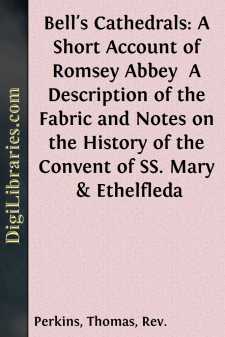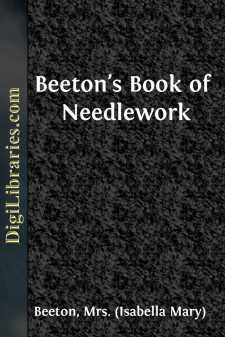Non-Classifiable
- Non-Classifiable 1768
Non-Classifiable Books
Sort by:
by:
Gleeson White
here is probably no cathedral church in Europe, certainly no other English one, that has such a clear record of its history as Salisbury. Whereas in almost every other instance we have only vague legendary accounts of the original foundation of the building, in this case there is a trustworthy chronicle of its first inception and each successive stage of its progress extant. Owing to reasons noted in...
more...
by:
Arthur Dimock
PREFACE. The MSS. relating to St. Paul's are deficient in regard to the earlier periods, but become gradually more complete as time progresses. They have been published or quoted, probably, more extensively than those belonging to any other religious foundation in this country, unless it be such communities as St. Alban's, which have attracted the continued attention of the editors working...
more...
by:
Thomas Perkins
HISTORY OF THE BUILDING. Long before any church stood on the site of the present cathedral, long before the time of Albanus, who is universally allowed to have been the first Christian martyr whose blood was shed in this island, events that have found a place in the early history of Britain occurred in the immediate neighbourhood of the city we call St. Albans. Here in all probability stood the oppidum...
more...
CHAPTER I. Long, eventful, and very interesting is the history of the cathedral, or rather of the successive cathedrals, of the ancient city of Rochester. It is many centuries since, in 597, St. Augustine and his fellow missionaries landed on the coast of Thanet, almost on the very spot where Hengist and his bands had disembarked nearly one hundred and fifty years before. Hengist’s descendant,...
more...
PREFACE. The original authorities for the history (both constitutional and architectural) of the Church of Ripon have been most ably edited for the Surtees Society by the Rev. Canon J. T. Fowler, F.S.A., in his Memorials of Ripon and The Ripon Chapter Acts (Surtees Soc., vols. 74, 78, 81, 64). These authorities range from the Saxon period to the times following the Reformation, but in the Introductions...
more...
CHAPTER I HISTORY OF THE BUILDING It is neither possible, nor desirable, within the limits of a book of this size and scope, to go fully into the question, interesting though it be, of the relative claims of Aldred and Serlo to the honour of the first building of the Abbey of Gloucester. Professor Willis, in his lecture addressed to the meeting of the Archæological Institute, held at Gloucester in...
more...
CHAPTER I. THE HISTORY OF THE BUILDING. No mention has been found of Ely as a town before the time of the virgin queen S. Etheldreda. The district known as the Isle of Ely—which now includes the whole of the northern part of Cambridgeshire above the River Ouse, together with a few parishes east of that river that are in the county—is spoken of at the time of the marriage of the princess as if it...
more...
by:
C. King Eley
CHAPTER I HISTORY OF THE CATHEDRAL CHURCH OF THE HOLY AND UNDIVIDED TRINITY The details of the founding of the cathedral of Carlisle are very precise and clear. When William Rufus returned southwards after re-establishing the city of Carlisle, he left as governor a rich Norman priest named Walter. He began at once to build a church to be dedicated to the Blessed Virgin Mary, which was to have in...
more...
by:
Thomas Perkins
CHAPTER I The etymology of the name Romsey has been much disputed. There can be no doubt about the meaning of the termination “ey”—island—which we meet with under different spellings in many place-names, such as Athelney, Ely, Lundy, Mersea and others, for Romsey stands upon an island, or rather group of islands, formed by the division of the river Test into a number of streams, which again...
more...
TATTING INSTRUCTIONS The needlework called Tatting in England, Frivolité in French, and Frivolitäten in German, is a work which seems, from all accounts, to have been in favour several generations ago. Modern ingenuity has discovered some ways of improving on the original plan of tatting, which was, indeed, rather a primitive sort of business as first practised. To Mrs. Mee, one of our most...
more...


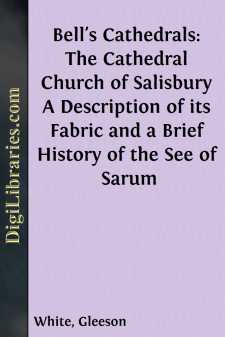
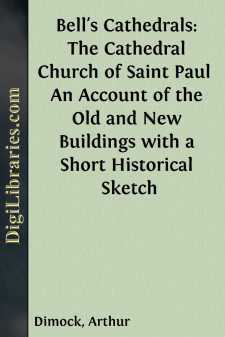
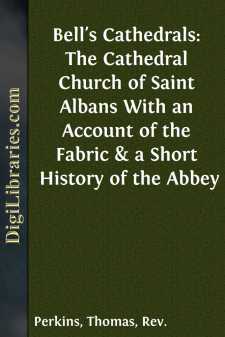
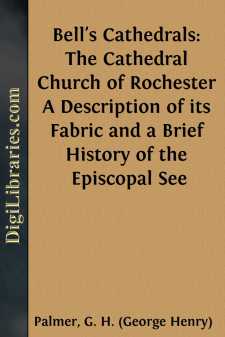
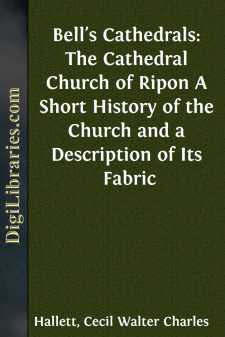
![Bell's Cathedrals: The Cathedral Church of Gloucester [2nd ed.]...](https://digilibraries-com.s3.eu-central-1.amazonaws.com/covers/19f010e5-29ed-4100-9d5c-845551573294.jpg)


